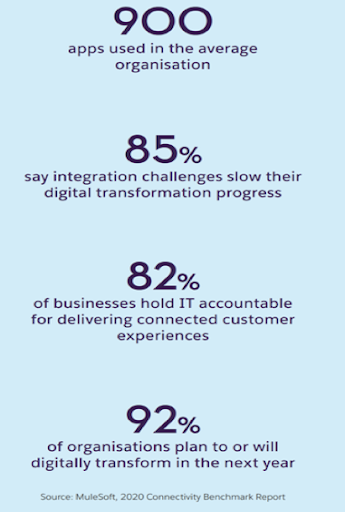The days of calling IT up out of the basement for quick fixes are long over. Instead, IT is quickly becoming a central part of an enterprise’s organisational structure.
In a new age of business and digital transformation, the role of the CIO and the technology team is shifting from a tactical position to that of a critical driver of business strategy. As a result, the role of the IT department and its leaders now touches every aspect of the organisation.
The importance of IT and organisational structure
Today, CIOs are responsible for driving revenue and innovation. According to the 2020 State of the CIO research, 89% of IT leaders say they are more involved in leading digital transformation initiatives than their business counterparts.
IT has moved out of the “backroom”, beyond strictly operational concerns. It’s taken a more proactive approach to product development, business strategy, customer experience, and more.
Having IT as a central part of your organisational structure is a necessity, not an option. The rate at which consumers have adopted digital technologies and the myriad of new ways to influence and engage with customers online is rapidly increasing.
IT expanding seats across the organisation
IDG reported in last year’s State of the CIO research report that 89% of IT leaders say they are more involved in leading business strategy and digital transformation initiatives than their business counterparts.
What does this look like in practice?
At Salesforce, Srinivas Nadendla and his team are responsible for keeping Org62 operational. Org62 is our internal instance of Salesforce and involves users in sales, service, marketing, employee success, and more.
“I would say that 30% of my team’s time is spent keeping the lights on,” Nadendla explains. “And 70% is spent innovating, thinking about how we can build smarter tools to proactively detect challenges or gear up for future needs.”
It’s so important that IT is a part of the conversation early on, to help grow the business plan through technology. Srinivas states, “As a matter of fact, we rebranded IT as Business Technology here at Salesforce for this very reason. We rely on IT to bring innovative ideas and solutions that solve real problems for employees and customers in every department. The IT understands the technology and how it can be used. It’s up to you to ensure the organisation’s leadership understands just how critical IT is in addressing the problems each department is facing, and that IT is empowered to bring input and guide solutions in proactive ways.”
Armed with an understanding of the needs of sales and service, product development, and finance, CIOs and IT departments are now pivotal parts of boardroom discussions.
Three ways IT can drive business strategy
According to research from MuleSoft, 82% of businesses now hold IT accountable for delivering connected customer experiences.

Here are three ways IT leaders can help with this transformation and drive business strategy:
1. Understand each department’s role in your organisational structure
It is very important to break down silos and understand the challenges that different departments are trying to deal with within organisational structures. CIOs and IT teams must sit together with them as they’re doing their jobs. Listen and observe what they need and how they function. Understand where gaps, pain points, or opportunities might exist.
When IT can see where internal business partners are coming from and understand what they’re trying to accomplish, they can apply technology to help the business get to where it needs to go.
2. Listen for opportunities
No matter how well you think your organisation performs, there is always room for improvement. Sales, service, and marketing departments are increasingly turning to IT departments to help improve the customer experience.
It’s essential for IT to be in the room with an open ear, listening for opportunities to create new capabilities that will support customers and drive business success.
3. Take the lead
IT leaders and teams must take the lead and spearhead technology-driven change across their organisations. They need to be agile, fast, and flexible enough to get ahead of ever-changing business demands. They must also create a culture of experimentation where everyone is empowered to innovate and problem-solve.
Tips to ensure IT is central to organisational structure
- Advocate for the prioritisation of cloud adoption to get IT out of the rabbit hole of a backlog of troubleshooting tasks.
- Guide the establishment of organisation-wide KPIs and objectives. Ensure that all can use it to guide their efforts and to understand how peers in other departments support them.
- Claim a seat for IT in departmental and cross-departmental strategy-setting meetings. This helps ensure the department is well-versed in the needs of various stakeholders and in a position to bring innovative solutions.
- Nurture a culture of experimentation. Build a path to become more agile and change course if another technology-driven solution presents opportunities for the business.
- Embrace the position of the CIO as an agent of change. Convey that value to department leaders across the organisation so that all decision-makers are aware and on board with the massive opportunities IT offers.
Continue learning about IT and organisational structure
As connected consumers demand ever-more-rewarding and personalised experiences, the role of the CIO and the IT department has been elevated. It is now a critical component of business strategy and boardroom activity.
Learn more about how IT can bring the competitive edge as a crucial part of your organisational structure with the CIO Playbook.








